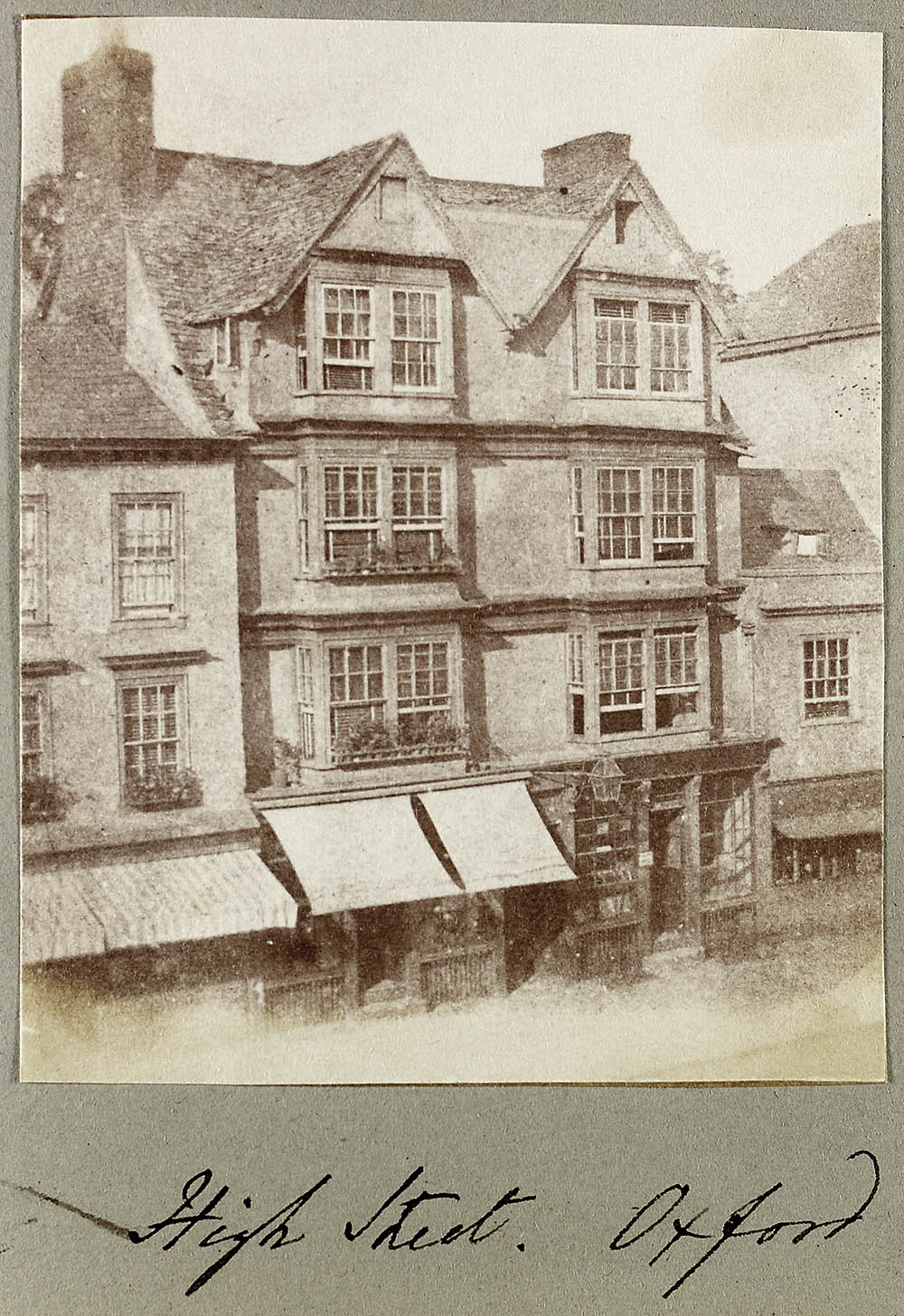I have just returned from Phoenix, Arizona, celebrating my mother’s 95th birthday. The peak temperature there was a blistering 117 F (47 C). But just to bolster the position of climate change deniers, I can report that now back here at Rock House in Baltimore I am enjoying a much more moderate and seasonal 97 F (36 C). So I have just a bit of difficulty sympathizing with Brian’s 84 F (29 C) and may suggest that, in spite of his heritage, he temporarily shed his Harris Tweed jacket?
guest post by Brian Liddy
Talbot’s photographs often contain clues as to the circumstances when they were taken. Previous blogs have detailed how leafless trees inform the viewer that it was winter. Some hints are more subtle: the clear and distinct delineations of branches of these denuded trees imply that there was no wind that day, as any swaying in the breeze during the long exposure would have resulted in a blurred image.
Today’s photograph, and others like it might feature in any number of future blogs, including one dedicated to Talbot’s relationship with the city of Oxford, explaining the many (but perhaps not obvious) reasons why it makes sense for the Bodleian Library to host an online project devoted to Talbot’s photographic work. But with this unusually hot summer, I am sensitive to what this depiction of part of Oxford’s High Street tells us about a particular hot day in the early 1840s.
Taken from the elevated viewpoint of an upstairs window across the street, the perspective lines created by the opposite buildings’ walls, corners and window bays are kept parallel. Had Talbot placed his camera at street level, he would have been forced to angle it upwards, keystoning the buildings into pyramids. Reacting to some of Talbot’s first photographs, his Uncle William complained that “I wish you could contrive to mend Natures [sic] perspective – we draw objects standing up & she draws them lying down which requires a correction of the eye or mind in looking at the drawing.” Henry took heed and many of his subsequent urban photographs published in The Pencil of Nature and Sun Pictures in Scotland followed this advice. Talbot also turned his camera obliquely to the buildings, creating a more pleasing composition than if he had simply taken them straight on.
The first clue that makes me think it was hot that day are the awnings at street level. Admittedly, the shopkeeper might have routinely deployed the awnings as a defence against the inevitable rain, but here I think they were providing shade on a sunny day because almost all of the upper storey windows are wide open, presumably to create a breeze for the staff and customers. I can’t make out if the shop is selling perishable goods, but if it is, the open windows may have been an attempt to keep the temperature down in the days before refrigeration.

This is where some of the useful tools incorporated into the Talbot website come into play. One of the most powerful is the zoom function on the ‘Image Viewer’, which allows close inspection of an image, sometimes down to paper fibre level.
Zooming in and moving around our view of High Street you’ll see window boxes with mature plants, so we are well into the summer growing season. These don’t prove that it was a hot day, but take a closer look at the bay windows. Although most of them are wide open, they have Venetian-style blinds drawn to keep the temperature inside down. The image viewer also makes it easier to spot shadows, of which there aren’t many obvious ones as the building is photographed in full direct sunlight – another clue to the weather conditions that day.

Remarkably, these buildings still exist (save for a wee upward extension on the right hand one). If you are remote from Oxford, Google Street View will bring up the modern state of many of Talbot’s subjects. Even better, there is actually a dedicated website for this.
As to shedding my Harris tweed Jacket?
Never! Not even temporarily.
Brian Liddy
• Questions or Comments? Please contact digitalsupport@bodleian.ox.ac.uk • WHFT, High Street, Oxford, salt print from a calotype, ca. 1842-1843, National Science and Media Museum, Bradford, 1937-2531/19; Schaaf 1441. • William Thomas Horner Fox Strangways to WHFT, 10 June 1839, Talbot Correspondence Document no 3890.




